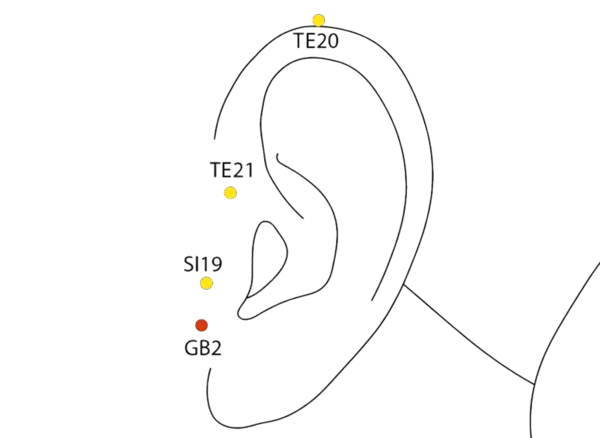GB-2 - Hearing Convergence
听会 - Tīng huì
Point Region: Head
GB-2, or 'Tinghui' (meaning 'Meeting of Hearing'), is a local point located in front of the ear. Its name refers to its position as a 'meeting' point for the 'hearing' organ, where it can be used to address issues related to the ears and jaw.
As a local point, Tinghui is primarily used for issues related to the ears and jaw, such as a ringing in the ears, a loss of hearing, and a stiff jaw. It is a go-to point for 'clearing heat' and 'regulating' the flow of energy in the ears and jaw. By stimulating this point, you can help to restore a sense of balance and harmony to the entire body.
Tinghui acts as a vital access point to the core of the body, providing a direct and effective way to address blockages and restore a sense of comfort and vitality to the upper body. It's a reminder of the power of local points to provide targeted relief and restore a sense of comfort and vitality to the entire body.
Location & How to Find
Anatomical Location: In the depression anterior to the ear, just in front of the tragus.
How to Locate:
- Locate your ear opening
- Find the small cartilage flap in front of your ear opening
- Place your finger just in front of this flap
- Feel for the depression between the cartilage flap and your jaw
- The point is in the depression between the cartilage and your jaw

Primary Functions
Auditory System
- Improves hearing acuity
- Relieves tinnitus and ear ringing
- Treats deafness and hearing loss
- Reduces ear pressure and congestion
Nervous System
- Alleviates jaw tension and TMJ disorders
- Calms facial nerve irritation
- Reduces trigeminal neuralgia
Liver & Gallbladder System
- Clears gallbladder heat
- Promotes decision-making clarity
- Balances emotional responses
Clinical Applications
Primary Indications
- Tinnitus
- Deafness
- Earache
- Jaw pain
- Tmj dysfunction
- Hearing loss
- Ear infections
- Facial paralysis
Related Health Concerns
Common Conditions:
Related Acupoints
Select a point to learn about its location, primary functions, clinical applications, and protocols.
GB-2 Protocols
N/A